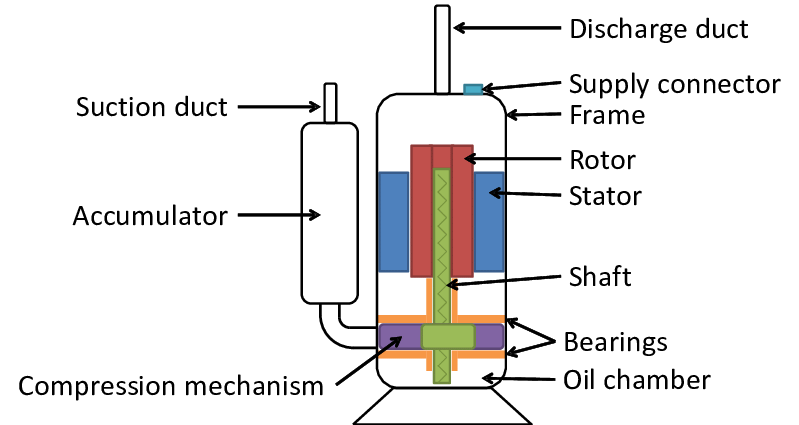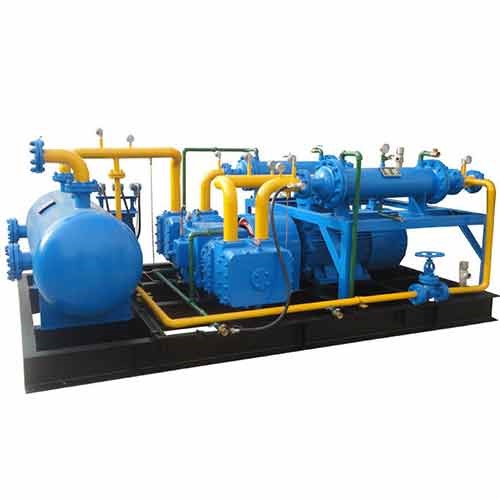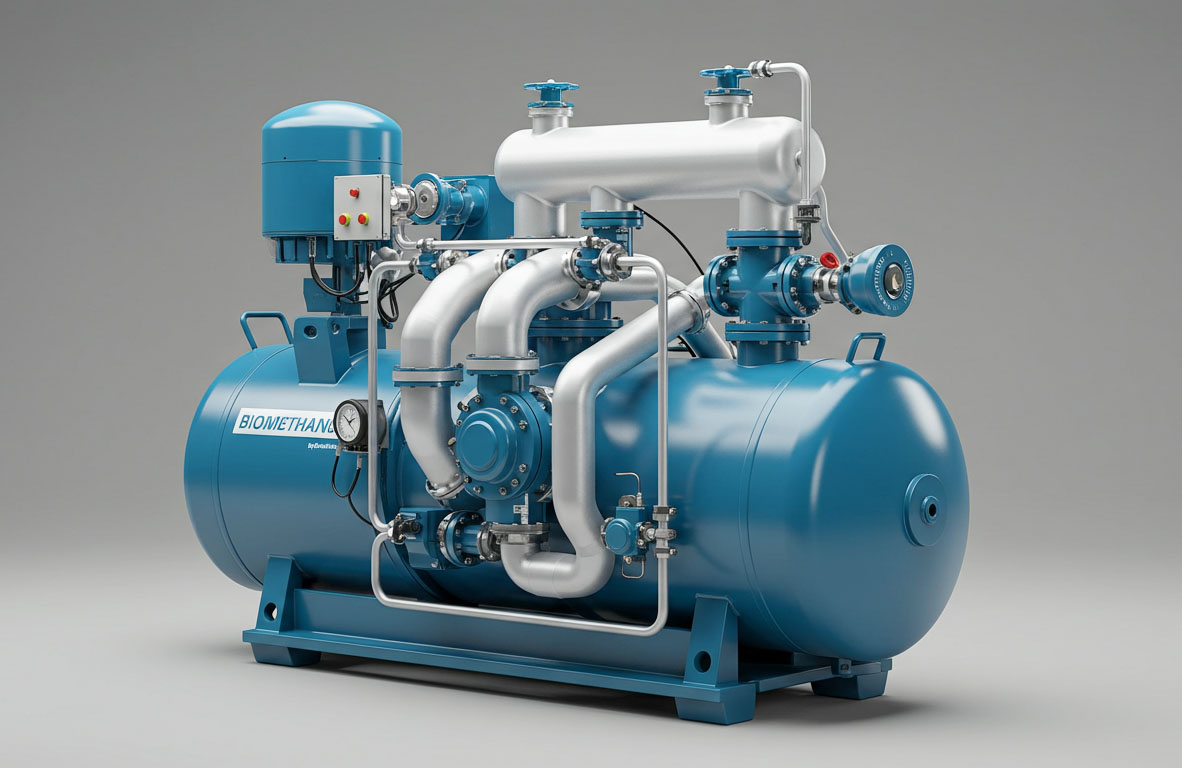Understanding A Rotary Compressor: The Basics
A rotary compressor, employing a rotating mechanism, functions as a mechanical apparatus for compressing gases or air. Its operational principle centers around continuous compression and finds extensive utility across a multitude of industries. Their indispensable attributes include high efficiency, compact design, and minimal noise, rendering them essential components in contemporary technology and manufacturing.
How Rotary Compressors Work
Rotary compressors are vital components in various applications, including air conditioning and industrial processes. They work based on the principle of reducing the volume of gas to increase its pressure.
Basic Principle
Rotary compressors operate on the displacement principle. They use rotating components to trap and compress gas, resulting in an increase in pressure and temperature.
Types of Rotary Compressors:
- Scroll Compressors: These have two interleaving scrolls; one remains stationary, while the other orbits. Gas gets trapped and compressed as the orbiting scroll moves.
- Screw Compressors: Screw compressors feature two helical rotors that intermesh. As they rotate, gas is drawn in, trapped, and compressed along the screw profiles.
- Vane Compressors: Vane compressors utilize a rotor with slotted blades. The blades slide in and out of the rotor, trapping and compressing gas in the process.
Key Components
- Rotors or Blades: These are the moving parts responsible for compressing the gas.
- Housing: The compressor’s casing contains and directs the gas flow through the compression process.
- Compression Chamber: This is the space where gas is trapped and compressed.
Operating Cycle
- Suction: Gas is drawn into the compressor through the suction port as the rotor or scrolls rotate.
- Compression: The gas is progressively compressed as it moves through the compression chamber, resulting in increased pressure and temperature.
- Discharge: The compressed gas is then discharged through the outlet port for use in various applications.

Advantages of Rotary Compressors
Rotary compressors possess a range of advantages across diverse applications, owing to their distinctive design and operational features:
Enhanced Efficiency
Renowned for their impressive efficiency, rotary compressors employ a continuous compression process and minimal clearance volume, minimizing energy wastage during operation. Consequently, they stand out as energy-efficient solutions, ultimately reducing long-term operating costs.
Compactness and Portability
Rotary compressors often boast a compact and lightweight construction compared to alternative compressor types. This inherent compactness renders them exceptionally suitable for applications constrained by limited space. Furthermore, their reduced size facilitates convenient transportation and installation.
Reduced Vibration and Noise
In contrast to reciprocating compressors, rotary compressors typically generate less vibration and noise. This characteristic proves especially valuable in applications necessitating a tranquil and vibration-free environment.
Unwavering Reliability
Renowned for their unwavering reliability and durability, rotary compressors feature fewer moving parts and an efficient design that curbs wear and tear. Consequently, they enjoy extended operational lifespans, making them indispensable in critical industrial and commercial settings.
Applications of Rotary Compressors
Rotary compressors find extensive applications across various industries due to their efficiency and versatility:
Industrial and Manufacturing
- Pneumatic Tools: Rotary compressors power pneumatic tools and equipment in manufacturing plants, facilitating various production processes like metalworking, assembly, and painting.
- Material Handling: They support material handling systems, including conveyor belts and pneumatic conveying, to move goods efficiently within factories and warehouses.
- Compressed Air Systems: Rotary compressors supply compressed air for various industrial applications, such as powering machinery, controlling valves, and driving pneumatic actuators.
- Food and Beverage: In the food and beverage industry, they assist in packaging, bottling, and maintaining controlled environments for production and storage.
Automotive Industry
lEngine Boosting: Some turbochargers incorporate rotary compressors to increase engine performance by compressing intake air, and enhancing power and fuel efficiency.
Medical Devices
- Medical Air Systems: Rotary compressors play a crucial role in medical air systems, providing a clean and reliable source of compressed air for respiratory devices, surgical equipment, and hospital infrastructure.
- Dental Equipment: They are used in dental offices to power tools like drills, air scalers, and dental chairs, ensuring precise and efficient dental procedures.
Maintenance and Care
Proper maintenance and care are essential to ensure the longevity and efficient operation of rotary compressors. Here are key practices to follow:
Regular Inspection
- Visual Checks: Periodically inspect the compressor for signs of wear, leaks, or damage. Look for loose connections, oil leaks, and unusual noises.
- Pressure and Temperature Monitoring: Monitor operating parameters such as discharge pressure and temperature to detect any anomalies that may indicate problems.
Lubrication
- Oil Levels: Maintain the correct oil level in the compressor. Insufficient oil can lead to overheating and premature wear, while excessive oil can reduce efficiency.
- Oil Changes: Follow the manufacturer’s recommendations for oil change intervals. Regular oil changes ensure proper lubrication and prevent oil breakdown.
Cleaning
- Air Intake and Cooling Fins: Keep the air intake and cooling fins clean and free from debris, dust, and dirt. Clogged intake or cooling fins can lead to reduced efficiency.
- Condenser and Evaporator: Regularly clean the condenser and evaporator coils in refrigeration systems to maintain heat transfer efficiency.
Troubleshooting Common Issues
- Leaks: Address any refrigerant or oil leaks promptly to prevent system inefficiencies and environmental concerns.
- Excessive Vibration or Noise: Investigate and resolve unusual vibrations or noise, which may indicate issues with components like bearings or belts.
- Temperature Fluctuations: If the compressor is not maintaining the desired temperature, expansion valves, or sensors.
- Electrical Problems: Inspect electrical connections and controls for loose or damaged wiring and ensure that voltage levels are within the specified range.
- Reduced Capacity: If the compressor’s capacity drops, it could be due to issues like a worn compressor.
Regular maintenance schedules and adherence to manufacturer recommendations are crucial. It’s advisable to consult the compressor’s user manual or seek guidance from a qualified technician for specific maintenance procedures and intervals. Proper care not only extends the compressor’s lifespan but also ensures its reliable and efficient operation, reducing downtime and repair costs.
CONCLUSION
In conclusion, grasping the basics of a rotary compressor provides insight into its essential components, working principles, advantages, and versatile applications. Whether powering industries, or supporting critical medical devices, rotary compressors play a vital role in modern life, combining efficiency, reliability, and adaptability to meet various needs.


